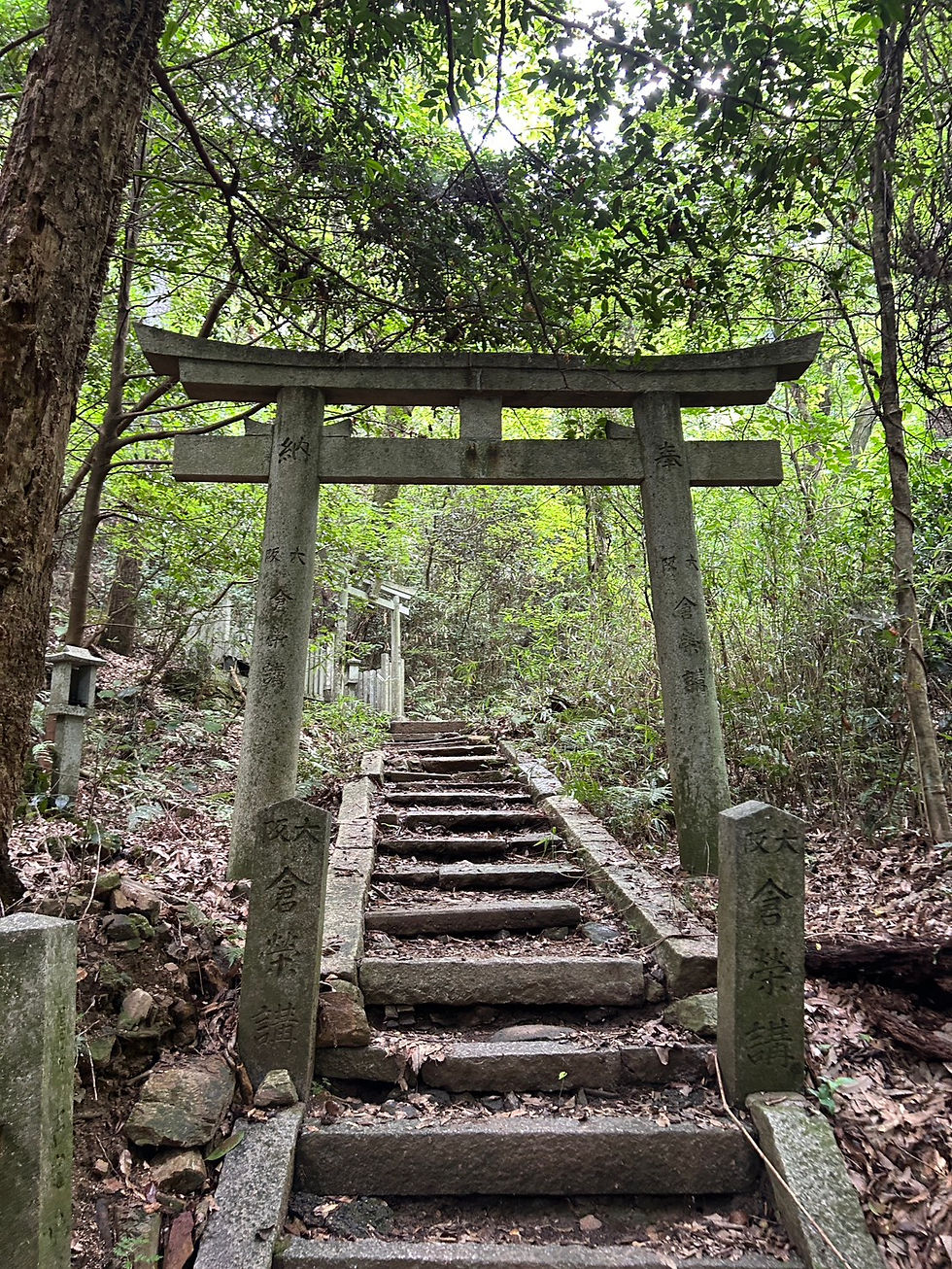Imashiro Zuka Burial Mound & Haniwa
- Phillip Jackson

- May 2, 2021
- 3 min read
The 6th Century Tomb of Emperor Keitai.
Dotted around the landscape of Japan, especially Kansai in the Osaka and Nara areas are many ancient keyhole shaped burial mounds, surrounded by moats, named Kofuns. Starting in the third century and continuing through to the early seventh century, these tombs were constructed for the imperial family, nobility, and the powerful.

One such Kofun burial mound in Takatsuki, Osaka, differs though in that the actual mound is open to the public to climb up and walk around on. The Imashirozuka Burial Mound is a huge keyhole-shaped burial mound about 354m in total length including its double moats. Archaeological digs took place on the site from 1988 to 1990 where haniwa clay figures arranged on the burial mound dating to around 530 A.D. were discovered, giving enough evidence to conclude that the burial mound is that of Emperor Keitai (the title of emperor (Tenno) wasn’t used at that time so would have been called Great King). Little is known of Keitai though it is believed that he lived from 450AD to 531AD (reigning from 507 to 531AD), he was the 26th emperor of Japan and the great grandfather or the more widely known Prince Shotoku.

Imashiro Zuka Burial Mound is a brisk twenty-minute walk from JR Setsu Tonda station, or a short bus ride (bus details and walking route map can be seen outside of Setsu Tonda JR Station). The site has been restored in recent years and the park around it is well kept, making the site a popular place where local residents and visitors to the city come to relax, exercise, or have a picnic (note, dogs are not allowed on the site, only on the perimeter path).
Only the west end of the inner moat is filled with water and atop the bank at this end is a row of clay pots, these pots would originally have been thought to have warded off evil spirits. A number of small information boards show, with pictures, how these would have been made. Around the site are a total of thirteen pictoral information boards.
Following the path around to the long north side of the mound you come to the display of replica clay model haniwa, the only place in Japan where a display like this exists.

There are over 190 figures of houses, people, and animals which you can get right up to for a close look. Exact details as to the purpose of the haniwa is not known as at this time there was no writing system in Japan so there are no written records. It is thought though that the clay models were placed on top of the mounds in some cases, though here they were situated as a ‘precinct’ along the side, and not buried underground.
Takatsuki City have actually taken the image of the Haniwa warrior and used it as the city mascot, named Hanitan. August 20th has also locally been designated as Haniwa Day, and Haniwa related events are organized to coincide with this.
As mentioned above, the inner burial mound is open to the public to freely explore. Crossing the grassed inner moat area, steps lead up and on to the mound. A number of paths wind around and across the mound and here too are more information boards (Japanese, though with descriptive pictures). The top of the mound is covered in its entirety by trees and it is more like taking a walk through a woodland area.

As well as the actual burial site, close to the north side a path leads to a small museum and gift shop. Entrance to the museum is usually free unless for special exhibitions. Occasional workshops are also conducted to teach about the history and also to participate in related crafts. The museum houses three stone coffins from the Kofun mound and though small it is modern and a worthwhile visit. One of the displays is of a haniwa clay house, at around three feet in height it is the biggest in Japan. The museum does also have information pamphlets in English.
There are two reasons to visit Imashirozuka, one for its historical value, and secondly, as a beautiful relaxing park to spend your day.
For information on the museum and also the park (including access map) refer to the English web page https://www.takatsuki-kankou.org/imashiro-daio/en/
Nearest station – JR Setsu Tonda (Kyoto Line). Advisory at time of posting (May 2021) - Please visit AFTER the covid situation has eased.





Comments